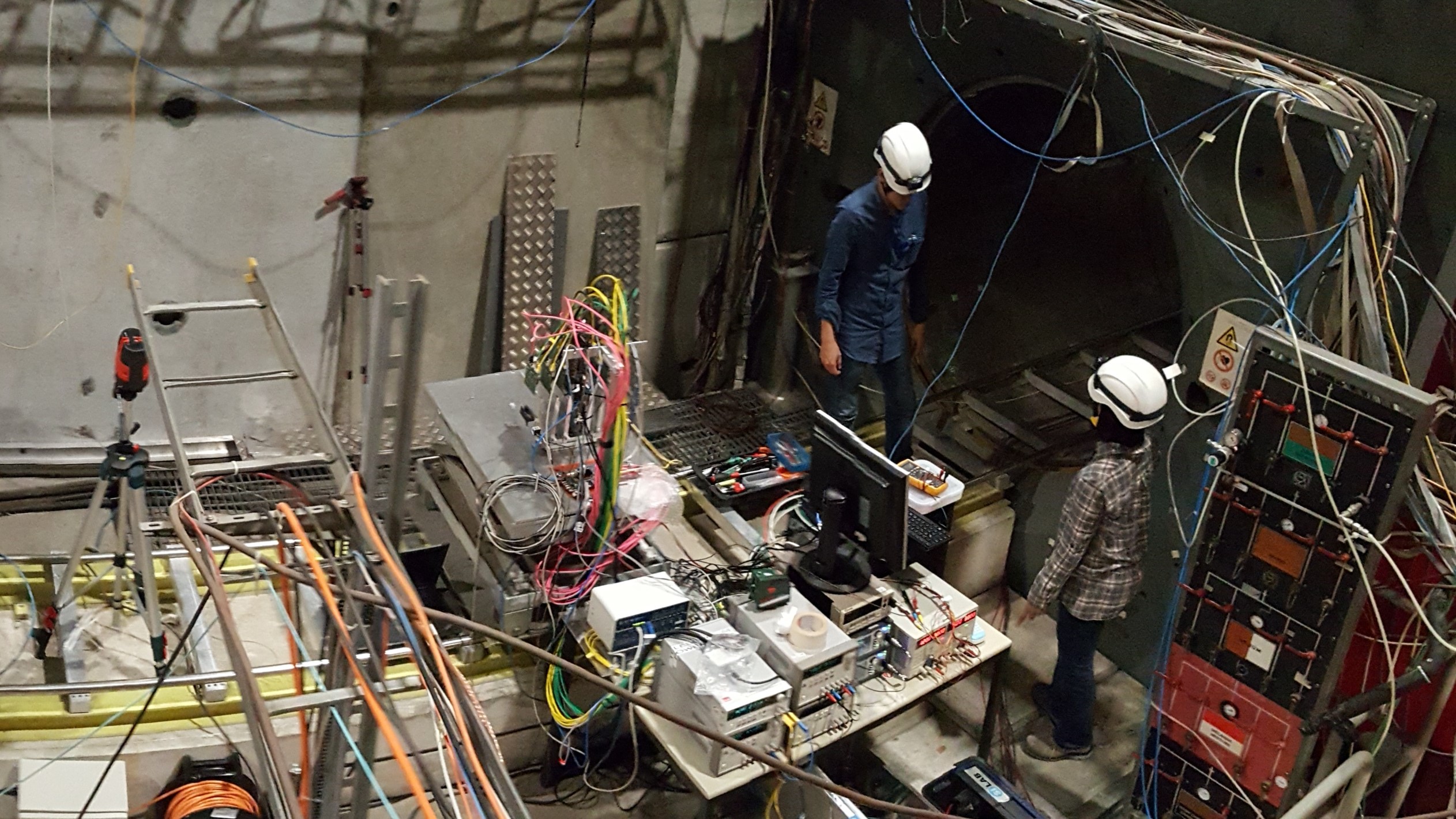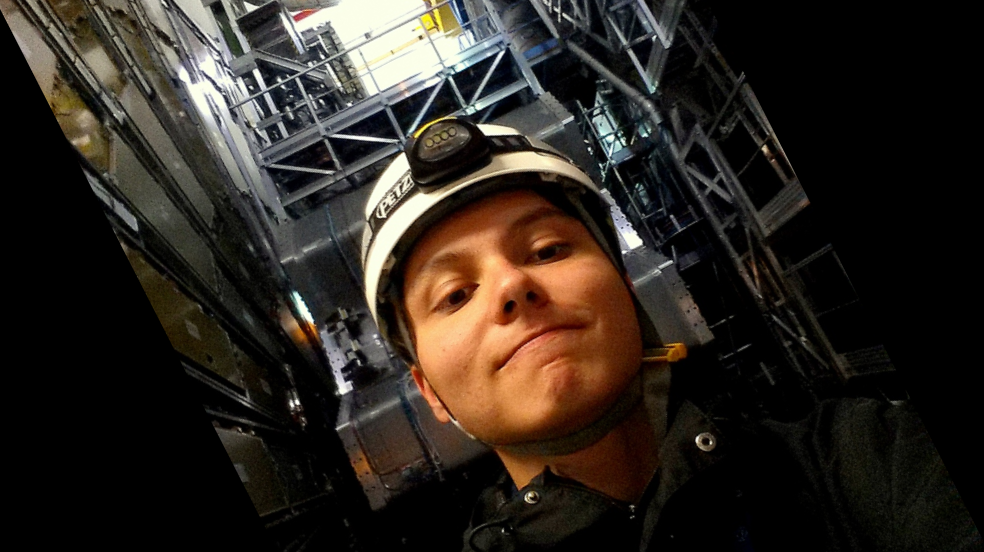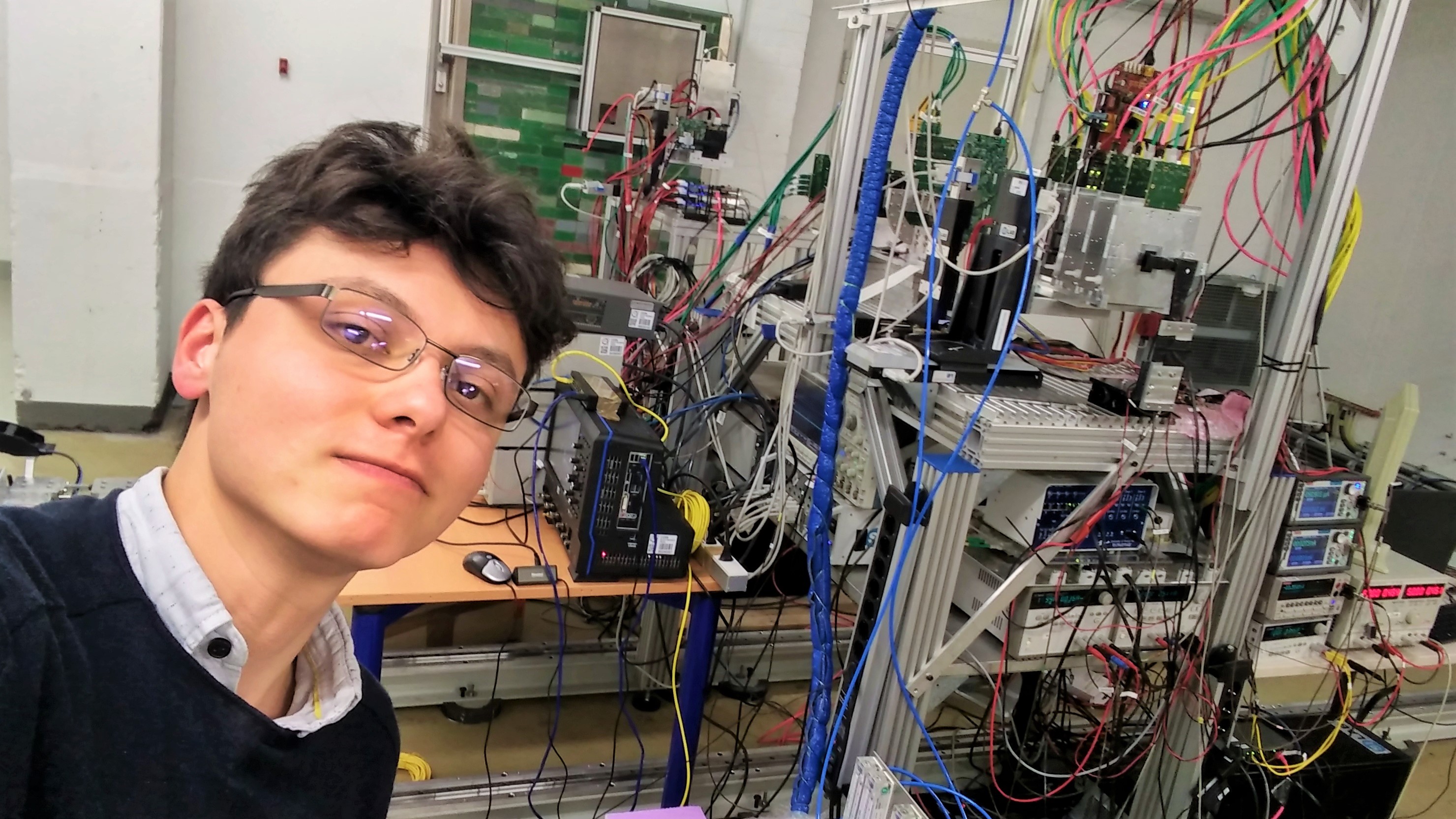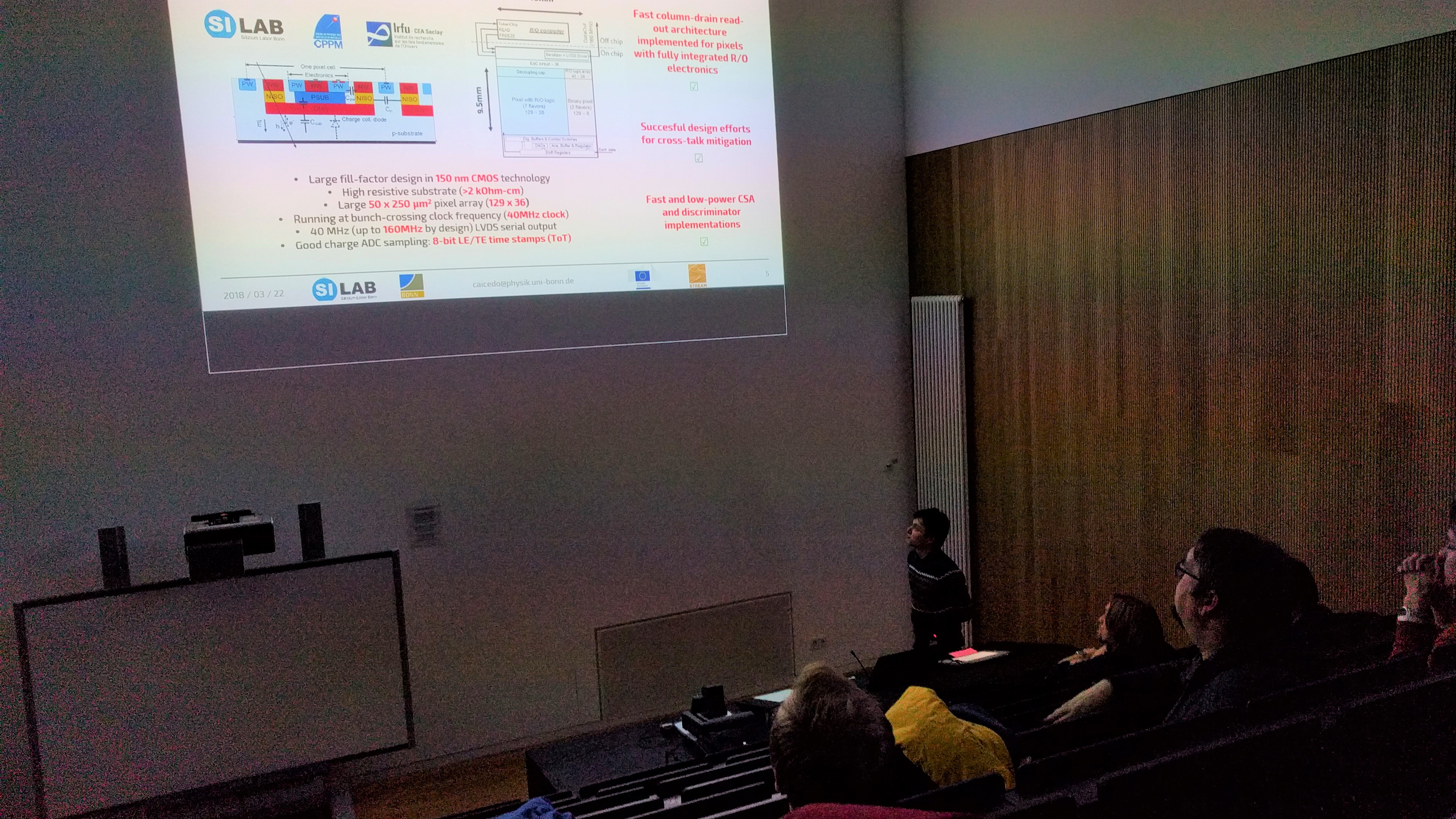
- Characterization, optimization and applications of pixel detectors.
- Particle, detector and medical physics.





Colombian PhD candidate at the University of Bonn. My current research is focused on the development and characterization of monolithic CMOS pixel sensors for particle physics.
I have previous experience on the characterization of hybrid pixel semiconductor detectors, their use for the measurement of the composition and spectral characteristics of mixed radiation fields, and their applications in medical and particle physics.
|
My main task as a member of STREAM -and within the CMOS development project for the ATLAS upgrade at the LHC- is to carry out tests and generate a comparative assessment of hybrid and monolithic CMOS sensor prototypes developed by the STREAM partners. In order to do so, I take part of different steps carried out during the sensor development process: - Setup (e.g. Test board design, firmware and software development) - Electric characterization (e.g. Determination of detector capacitance, leakage current measurements in different conditions, verification of analog and digital signals, cross-talk, noise and gain measurements) - Optimization (e.g. Threshold tuning, determination of adequate read-out parameters and optimum DACs for low noise, time-walk and power consumption) - Irradiation (e.g. Test beams for in-time efficiency determination, measurement of sensor performance after TID and NIEL irradiation) - Comparison between design features in different CMOS sensor prototypes.
Secondments
|
The experience of joining STREAM, the Physics Institute in Bonn and the community involved in the ATLAS CMOS project has widened - at a fast pace - my range of skills and knowledge of pixel detectors. In STREAM, we are hosted by experienced institutes and supervised by researchers who share their ideas and support us efficiently on a regular basis. Through this project I will be able to contribute to state-of-the-art developments in the field of pixel detectors in CMOS technology, which might end up being key players in the future of semiconductor detectors for particle physics and many other applications.
